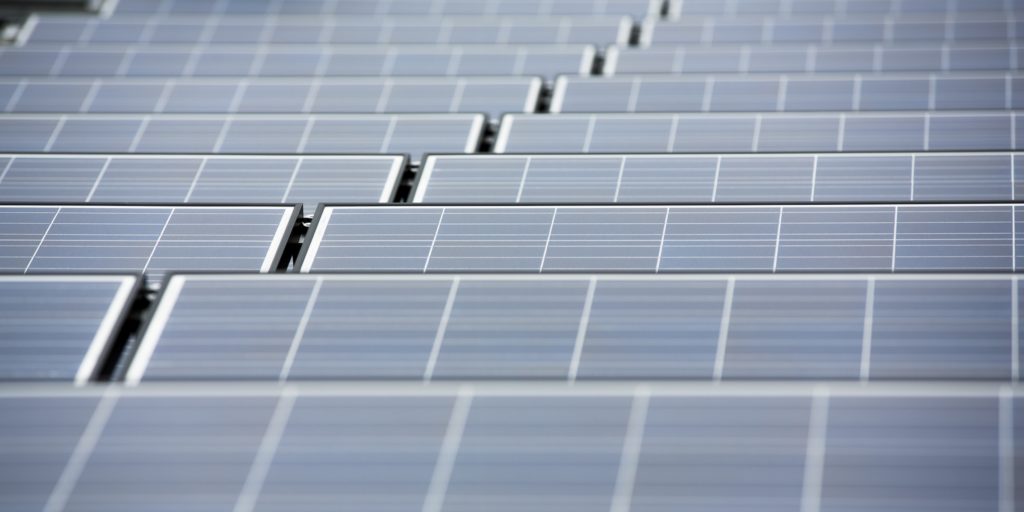India’s cumulative installed solar capacity has touched 28 GW – a long way short of the 100 GW target set for 2022 but a giant leap from the nation’s meager 9 MW of 2009.
Analyst Bridge to India’s India Solar Compass Q4 2018 report stated total installed solar capacity stood at 28.05 GW at the end of last year, split between 24.2 GW of utility scale projects and 3.85 GW of PV rooftops. Encouragingly, the report’s authors said there are a further 17.65 GW of projects being developed.
Carrying forward the world’s most ambitious renewable energy plan, India’s Ministry of New & Renewable Energy (MNRE) plans to tender for 60 GW of solar and 20 GW of wind capacity by March next year. That would leave a two-year window to complete the resulting projects before the 2022 deadline for achieving 175 GW of renewables capacity.
In the past decade, India’s solar dream has jumped from that negligible 9 MW to 12 MW the following year and 177 MW in 2011. The year 2012 witnessed a high of 998 MW before slumping to 984 MW in 2014. From 2,313 MW in 2015, capacity leapt to 4,313 MW in 2016 and the exponential growth continued with the 20 GW milestone reached at the end of 2017.
Land costs soar
By all measures it has been a spectacular decade for Indian solar but the story did not begin in 2009. In 1993, India had been the first developing country to adopt a feed-in tariff (FIT) scheme. By 2004, India had established a biofuel target of 10% of the electricity mix and there were green energy policy initiatives ranging from renewable portfolio standards to capital subsidies and incentives, tax breaks and public bidding processes. Other milestones included national generation-based incentives for wind and solar in 2007, the introduction of the Renewable Energy Certificate (REC) mechanism, the launch of the National Solar Mission in 2010 and establishment of renewable energy targets two years later.
During the past decade, capacities have soared and costs have plunged. In the 2009-2010 financial year, the cost of developing a solar project was Rs17 crore/MW, a figure which fell to Rs10 crore/MW in 2013, Rs8 crore in 2015, a benchmark cost of Rs7.5 crore/MW in 2016-2017 set by the government of India and the current figure of roughly Rs4 crore/MW.
Interestingly, according to the Central Electricity Regulatory Commission, land costs have soared in that time – from Rs15 lakh for the area required for each megawatt of generation capacity in 2010 to Rs16.8 lakh/MW in 2013-2015 and Rs25 lakh in 2015-2016. With site acquisition becoming more difficult, land continues to get more expensive. Theoretically, India’s electricity needs could be met on 3,000 km² – roughly 0.1% of the nation’s land area.
Modules getting ever cheaper
According to the MNRE, the price of solar electricity has also seen a sharp decline over the decade – from a reference point of Rs11.80-17.91/kWh in 2015 to an historic low of Rs2.44/kWh in May 2017, at the Bhadla Solar Park. Currently, depending on contract clauses, the tariff hovers around the Rs3/kWh mark.
The price of modules has perhaps best illustrated the advances made by solar – from a unit cost of around $2 in early 2011 the price plummeted 60% to $0.80 in 2013 and today’s products cost around $0.24 per Watt. With global solar prices having fallen 84% since 2010, a further 52% fall is anticipated by 2025.
According to BloombergNEF, India’s investment in solar amounted to $4.3 billion in 2009, touched $9 billion in 2010, hit the roof with $13.7 billion in 2011 and fell back to $8.1 billion the following year. Since 2013, investments in solar have yo-yoed but the sector managed to rake in $10 billion in 2017 to account for nearly 30% of all corporate funding for the industry globally. Prime minister Narendra Modi has called for $100 billion more PV investment by 2022 and last year, SoftBank Group alone announced it had decided to plow $60 billion-$100 billion into solar generation in India.
Is 100 GW possible?
Globally, India ranks fifth for solar capacity and half of the world’s largest, under construction solar parks are based in the country. This year is expected to be a good one for Indian solar with recent reports estimating that in 2019, PV will surpass 100 GW of utility-scale generation capacity. More than 75% of it is expected in Rajasthan – which will host more than 2 GW – Andhra Pradesh (1.9 GW), Tamil Nadu (1.8 GW) and Karnataka (1.5 GW) and more than 30 developers are expected to commission utility-scale projects this year.
There is plenty of skepticism about whether India will achieve its 2022 target of 100 GW of solar capacity. However, if a jump from 9 MW to 28 GW is possible in 10 years, the PV dream might not be impossible.
This content is protected by copyright and may not be reused. If you want to cooperate with us and would like to reuse some of our content, please contact: editors@pv-magazine.com.








Excellent and an optimistic article. Let us set our targets high so that we can achieve them and also raise our bar higher!!